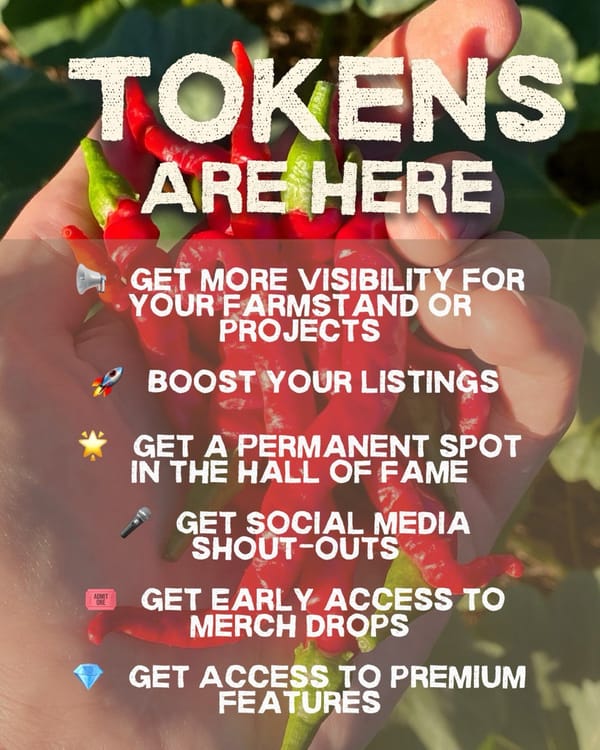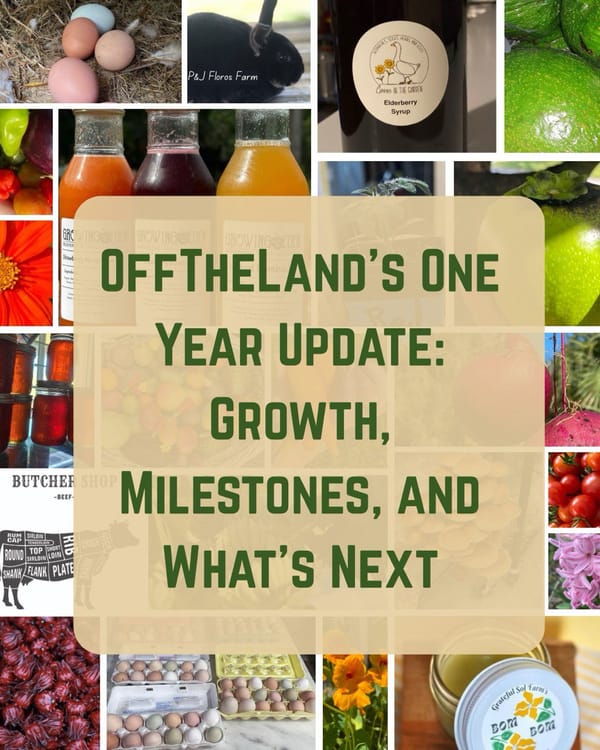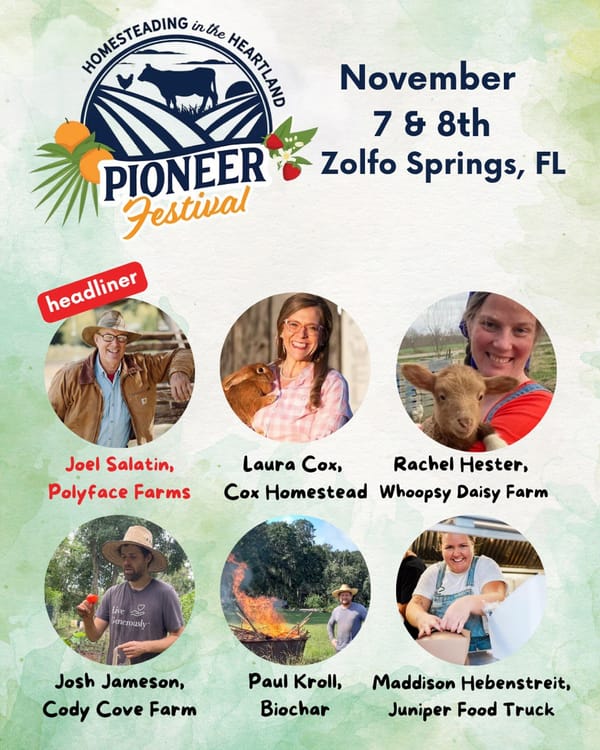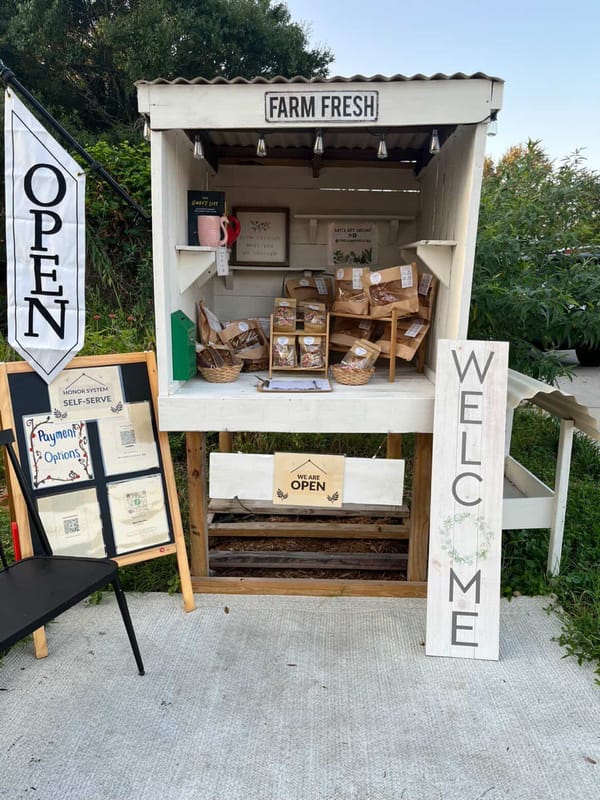Florida's New Poultry Rule Will Gut Small Farms (Unless You Act Now!)
For a small farm selling 200 birds a month, the shift from a $100 to a $20,000+ regulatory requirement is a direct threat to viability.

A new rule proposed by the Florida Department of Agriculture and Consumer Services (FDACS) could have major consequences for small farms and the Floridians who depend on them for clean, pasture-raised poultry.
Unless Floridians speak up before July 3, 2025, this regulation may force thousands of small farmers to pay significantly higher fees, renovate their facilities (tens of thousands of dollars), and comply with commercial-grade food processing laws, just to keep selling the same chickens they’ve safely processed and shared for years.
Here’s what’s happening, how it impacts farms and consumers, and how you can affect the outcome.
What’s Changing
FDACS is updating Rules 5K-4.020 & 5K-4.033, which govern how small farms can sell poultry and eggs in Florida. The most significant change is a new definition of “dressed poultry.”
Under the proposed rule, only birds that are sold whole with the head, feet, and internal organs (viscera) still intact will qualify under the existing $100 limited poultry permit [1].
This means that if a farmer removes the guts, head, or feet before sale (a standard practice for cleanliness and consumer preference) they will no longer qualify for the limited permit. Instead, they will be required to register as a full food processor and meet high compliance standards.
Lets look at the exact wording:
Notice of Proposed Rule, 5K-4.033, (3)(a):
Farms with less than 20,000 birds "shall be permitted as a limited poultry and egg farm operation pursuant to 5K-4.020(1)(n), F.A.C."
So if we look at Food Permits; Requirements and Fees, 5K-4.020, (1)(n), we see:
"Limited poultry and egg farm operation. A farm-based Food Establishment which directly produces and offers DRESSED poultry or whole shell eggs for sale. No additional processing or food preparation of such poultry or shell eggs is allowed under this permit category."
Back in 5K-4.033 (3)(c) “Dressed Poultry” means slaughtered poultry for human food, with head, feet, and viscera INTACT, and from which the blood and feathers have been removed.
Who Will Be Affected
This change does not affect large commercial producers. According to the USDA’s 2022 Census of Agriculture, 3,628 farms in Florida raise poultry [2]. Most of these are small farms, homesteads, and local growers who rely on direct-to-consumer sales to sustain their operations.
In the proposed rule, FDACS claims only “17 new egg farms” will be impacted [3], because they are also suggesting raising the allowed flock size from 1000 to 3000 hens, however this is not helpful, since 1000 hens already make about 416 dozen eggs per week, but the farmer is only allowed to sell 30. What are they going to do with all of those extra eggs?
On the other hand, the proposed redefinition of “dressed poultry” could impact hundreds or even thousands of existing poultry sellers who will be pushed out of the affordable permit category.
Even small backyard farmers who sell a few birds per week to friends and neighbors could be required to leave the head, feet, and guts attached to every chicken, or face the costs and inspections required for full industrial-scale processing permits.
Three Types of Poultry Sellers in Florida
Type of Seller |
What’s Allowed Now | What Will Change If Rule Passes | Cost |
|---|---|---|---|
| Backyard farmers | May informally sell a few home-butchered birds to neighbors; enforcement is minimal | Will be required to follow the same rules as permitted farms: either sell with guts/head/feet intact, or become a full processor | $0 now; $100 or $490+ if enforced |
| Limited permit farms | May sell up to 20,000 chickens/year (≤384/week). Typically remove guts, heads, and feet before selling | Will be restricted to selling only whole birds with head, feet, and guts intact under the $100 permit | $100/year |
| Factory-farm processors | Required only for farms exceeding volume limits or selling parts (cut-up or cleaned birds) | Any farm removing guts, head, or feet will now be pushed into this category, even if they’re small | ≈$490/year + ~$20,000 compliance |
The proposed rule narrows the definition of “dressed poultry” to mean birds with head, feet, and viscera intact. This means that removing any of those parts (such as cleaning out the internal organs) automatically categorizes the operation as a full food processor.
What It Means in Real Life
If you’re a small poultry farmer who processes 200 birds per month and sells them direct to customers (removing the feathers, head, feet, and guts before packaging) you will no longer qualify for the limited permit under the new rule.
To continue selling that way, you will be required to:
- Pay approximately $490 per year for a processor permit [6]
- Upgrade your facility to meet commercial food establishment standards (which can cost $10,000–$30,000 or more) [4]
- Develop written food safety plans such as HACCP and SSOP (often $15,000–$20,000 combined) [5]
- Complete sanitation training
- Perform regular water and microbial testing
- Comply with FDACS inspections and recordkeeping requirements
For most small farms, these expenses are not feasible. Even modest compliance can easily exceed $20,000 up front.
For a small farm selling 200 birds a month, the shift from a $100 to a $20,000+ regulatory requirement is a direct threat to viability.
Removing viscera (guts) from poultry is not optional in most farm settings. It is essential to prevent dangerous contamination such as Salmonella or Campylobacter. USDA’s own guidelines for poultry slaughter clearly require removal and sanitation of internal organs [7]. Selling a bird with intestines and crop still intact can pose a serious food safety hazard for consumers.
Why This Matters to Clean Food Consumers
This change is not just about how farmers operate. It affects consumers who want access to healthy, local, pasture-raised food. Many Floridians intentionally avoid factory-farmed meat raised on antibiotics, GMO feed, or under harsh confinement.
Direct sales from small farms provide an alternative, but only if small producers can stay in business! When the regulatory burden rises beyond their reach, these farms disappear.
According to USDA data, consumers already pay 55% more for antibiotic-free chicken, and 125% more for certified organic chicken [8]. There is strong demand for local, transparent, clean poultry, but it depends on rules that make space for small producers to operate.
Take Action Today!
FDACS is accepting public comments through July 3, 2025. If you want to protect your access to small farm poultry in Florida, this is your opportunity. Act now, or forever hold your peace.
Step 1: Leave your official comment
Visit https://flrules.org/Gateway/View_notice.asp?id=29655730
Click the blue “Make Comment” button.
You can say something simple like:
Small farms should not be forced to sell poultry with the guts, head, and feet still attached. This will push many small farmers out of business and limit consumer access to clean, local poultry.
Please revise the rule to allow small farms to continue processing chickens as they have safely done for years (removing the viscera, head, and feet) without being classified as full processors.
Raising the flock limit from 1000 to 3,000 hens could result in more than 1,200 dozen eggs per week, yet farms would still only be allowed to sell 30 dozen! Without increasing the sales limit, the flock size expansion sounds helpful but ultimately does little to support real farm viability.
Step 2: Share this with others
This is important, so email friends and neighbors and your chicken farmers! Post the link to social media using #GuttedByRegulation #localFood #KnowYourFarmer #FoodFreedomFL. Help others learn what’s at stake.
Florida Needs Food Freedom
This rule may seem like a small change on paper, but it will have real-world consequences for farmers, families, and communities. Small farms are the backbone of local food security. They deserve clear, fair rules that reflect how people actually raise and eat poultry.
Tell FDACS that Florida’s food system must include the little guy.
Food Transparency
It’s not clear why this change is being pushed now, or who is behind it. FDACS has not publicly explained the specific need for redefining “dressed poultry” in a way that harms small farms. There’s also no transparency about whether industry lobbyists, large processors, or other corporate interests influenced this change. Floridians deserve to know who stands to benefit, and why these burdens are being placed on the smallest producers in the state.
Updates and Timeline
This rule isn’t going through the Florida House or Senate, it’s happening through the state agency rulemaking process. FDACS held a public hearing on June 26, and they’re accepting written comments until July 3. After that, the department can finalize the rule and file it with the Secretary of State. This rule can become law just 20 days after filing, with no legislative vote, no public referendum, and no further review. That’s why it’s so urgent for Floridians to speak up now. This could quietly become law by late July unless enough people raise their voices.
Sources
[1] Proposed Rule Text – Florida Administrative Register (Vol. 51, No. 114, June 12, 2025)
[2] USDA Census of Agriculture (2022) – Florida Poultry Inventory, https://www.nass.usda.gov
[3] FDACS Economic Statement, Rule 5K-4.033 Proposal, https://flrules.org/Gateway/View_notice.asp?id=29655730
[4] FSIS Cost Analysis of HACCP & SSOP for Small Plants (USDA Food Safety and Inspection Service)
[5] National Sustainable Agriculture Coalition, "Cost of Food Safety Compliance for Small Meat Processors"
[6] Florida Administrative Code Rule 5K-4.020 – Food Permit Fees
[7] USDA FSIS Guidance for Voluntary Poultry Slaughter Exemptions (9 CFR 381.10)
[8] USDA ERS Retail Premiums for Organic and RWA Chicken, https://www.ers.usda.gov





